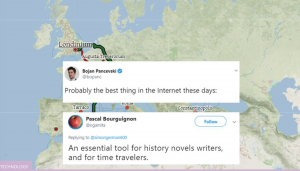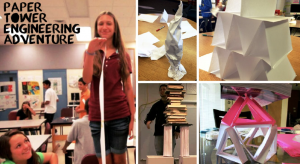 Source: IFL Science
Source: IFL Science
The Internet has a new favorite interactive map system!
ORBIS, the Stanford geospatial network model of the Roman world, allows you to check how long it would take you to travel from location to location during Roman times.
It’s customizable too! In the unlikely event that you were transported back to 200 BCE and yet somehow the 4G network traveled back in time with you, thanks to these maps you’d be able to calculate how long it would take you to get from Londinium to Corinthus by ox, or Augusta Treverorum to Alexandria as part of a military march.
As well as time, the map, which is of course based on historical evidence, shows you how much each journey would cost.
“Conventional maps that represent this world as it appears from space signally fail to capture the severe environmental constraints that governed the flows of people, goods and information,” Stanford wrote at the time of the release of the first version of ORBIS. “Cost, rather than distance, is the principal determinant of connectivity.”
We thought we’d have a look at how long it would take us to get from Londinium to Ierusalem, to ask them a few questions about what made them eventually change the I in their name to a J.
We gave the parameters that we would be traveling by donkey (as well as boat where necessary) and during the winter. According to Google, if we floored it and didn’t need things like sleep, we could arrive by car in 52 hours, or a much nicer 6-8 hours by plane. But, we know that that the journey would take a lot longer in Roman times:
“The Fastest journey from Londinium to Ierusalem in January takes 53.5 days, covering 5,433 kilometers [3,375 miles]. Prices in denarii, based on the use of a faster sail ship and a civilian river boat (where applicable), and on these road options:
Per kilogram of wheat (by donkey): 22.74
Per kilogram of wheat (by wagon): 27.45
Per passenger in a carriage: 1897.51″
If you were to select the cheapest route, it would take you 98.4 days to complete a 6,129-kilometer (3,303-mile) journey. However, you would save yourself nearly 1,000 denarii per passenger, and 7 denarii per kilogram of wheat. And is it really a holiday if you aren’t shipping a wagonload of wheat back with you as a souvenir?
Check out the map for yourself, it’s pretty cool to play with!
In the comments below, let us know what you discovered!


 Revisit the extraordinary life story of Harriet Tubman – a freedom seeker, conductor on the Underground Railroad, abolitionist, suffragist, and human rights activist. Tubman was born around 1822 Maryland. She is widely celebrated as one of the most respected individuals in American history.
Revisit the extraordinary life story of Harriet Tubman – a freedom seeker, conductor on the Underground Railroad, abolitionist, suffragist, and human rights activist. Tubman was born around 1822 Maryland. She is widely celebrated as one of the most respected individuals in American history.











